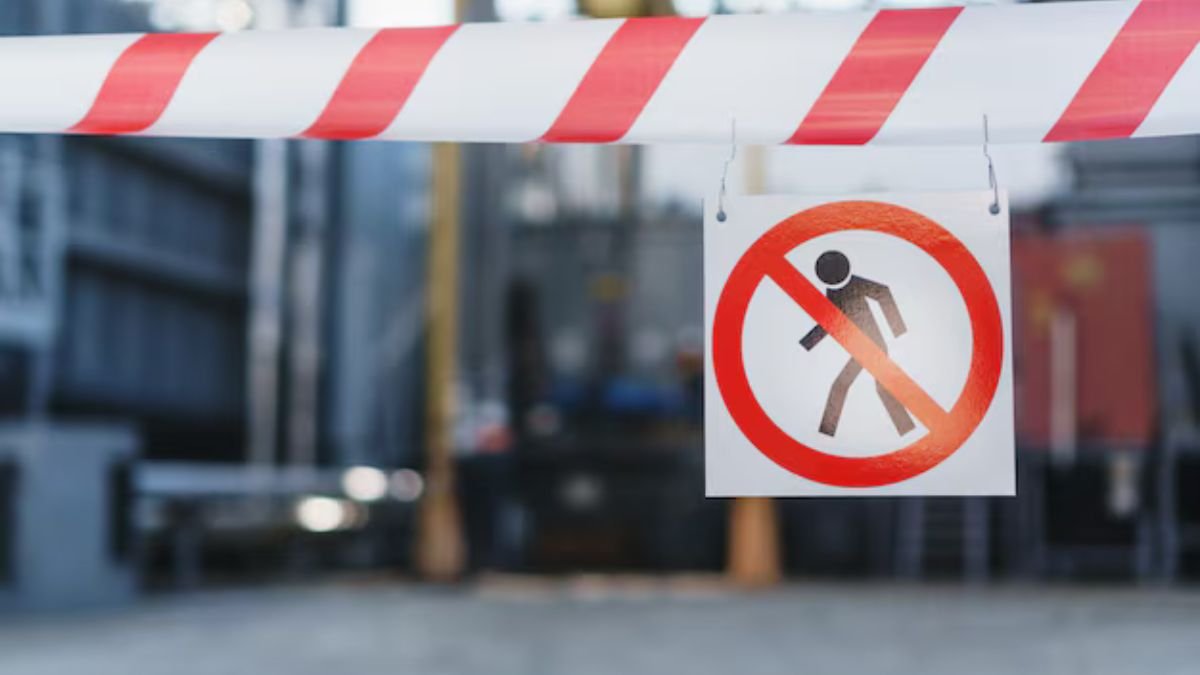Navigating the complexities of restricted areas can be challenging. Often marked by signs warning of danger, these “Forbidden Zone” are not just places with barriers but areas governed by specific rules and regulations to ensure safety and legal compliance. This article provides an in-depth look at the common rules and guidelines associated with Forbidden Zones, offering a comprehensive understanding of how to approach and respect these restricted areas.
Understanding the Concept of Forbidden Zone
Forbidden Zones are areas designated as off-limits to unauthorized personnel due to safety, security, or privacy concerns. These zones are established in various settings, including industrial sites, military bases, research facilities, and even natural reserves. The concept is rooted in the need to protect both people and sensitive information. Violating the rules of a Forbidden Zone can result in severe consequences, including legal actions and safety hazards.
Purpose and Necessity of Forbidden Zone
The primary purpose of Forbidden Zones is to mitigate risks and protect vital interests. In industrial settings, such as factories or power plants, these zones might be established to keep unauthorized individuals away from hazardous machinery or toxic substances. In military contexts, they prevent espionage and ensure national security. Research facilities may use these zones to safeguard confidential experiments or data. By restricting access, these zones help maintain operational integrity and safety.
Common Rules for Entering Forbidden Zones
- Authorization Requirement: Access to Forbidden Zones typically requires explicit permission from the relevant authorities. This could involve obtaining special permits or clearance levels. Individuals must demonstrate a valid reason for their entry and often undergo security checks.
- Identification: Authorized personnel usually need to carry identification badges or access cards. These credentials help monitor who is in the area and ensure that only those with proper clearance are present.
- Safety Gear: In many Forbidden Zones, safety equipment such as helmets, goggles, or protective clothing is mandatory. This gear helps protect individuals from potential hazards and complies with safety regulations.
- Accompanied Entry: In some cases, entry into Forbidden Zones is only permitted when accompanied by a designated guide or authorized personnel. This rule ensures that visitors are aware of potential risks and are supervised.
- Signage Compliance: Forbidden Zones are often marked with clear signage indicating the restricted nature of the area. It’s crucial for individuals to adhere to these signs and follow any specific instructions provided.
- Emergency Procedures: Familiarity with emergency protocols is essential. Forbidden Zones may have unique procedures for handling accidents or evacuations, and authorized individuals should be trained in these protocols.
Legal Implications of Unauthorized Access
Entering a Forbidden Zone without proper authorization can have serious legal consequences. Trespassing charges may be filed, leading to fines or imprisonment, depending on the jurisdiction and severity of the breach. Additionally, individuals may face civil liabilities if their unauthorized access causes harm or damage. Organizations responsible for Forbidden Zones also have the right to pursue legal action to protect their interests and maintain security.
Safety Considerations and Risks
Safety is a paramount concern in Forbidden Zones. These areas often contain hazards that could pose serious risks to untrained or unauthorized individuals. Potential dangers include exposure to harmful chemicals, physical injury from machinery, or environmental risks such as unstable terrain. Adhering to safety protocols and respecting access restrictions helps prevent accidents and ensures that individuals remain out of harm’s way.
Best Practices for Compliance
To ensure compliance with Forbidden Zone rules, individuals should:
- Understand Regulations: Familiarize themselves with the specific rules governing the Forbidden Zone they are dealing with. This information can usually be obtained from the managing organization or authority.
- Seek Proper Authorization: Always obtain the necessary permissions before attempting to enter a Forbidden Zone. This may involve applying for access through official channels and providing a valid reason for entry.
- Follow Safety Protocols: Adhere to all safety requirements, including wearing appropriate gear and following emergency procedures. This helps mitigate risks and ensures personal safety.
- Respect Signage and Boundaries: Pay attention to warning signs and physical barriers marking the boundaries of Forbidden Zones. These are in place to protect both individuals and the integrity of the area.
- Report Violations: If witnessing any unauthorized activities or breaches, report them to the relevant authorities. Prompt reporting can help prevent potential security or safety issues.
Case Studies of Forbidden Zone Violations
Examining real-world cases where Forbidden Zone rules were violated can provide valuable insights into the consequences and challenges associated with these areas. For example, there have been instances where individuals trespassed into restricted military zones, leading to heightened security measures and legal proceedings. Similarly, unauthorized access to industrial facilities has resulted in accidents and environmental damage. These case studies highlight the importance of respecting Forbidden Zone regulations and understanding the potential impacts of non-compliance.
Conclusion
Forbidden Zones play a crucial role in safeguarding people, property, and information. By adhering to the established rules and regulations, individuals can contribute to maintaining safety and security within these restricted areas. Understanding the purpose behind these zones, the legal implications of unauthorized access, and best practices for compliance can help navigate the complexities associated with Forbidden Zones. Respecting these boundaries is not just a matter of legal obligation but a fundamental aspect of ensuring the well-being of all involved.
Frequently Asked Questions (FAQs) About Forbidden Zone
1. What is a Forbidden Zone?
A Forbidden Zone is a designated area restricted from access by unauthorized individuals due to safety, security, or privacy concerns. These zones are established to protect people, sensitive information, or critical infrastructure. Access is typically regulated and requires specific permissions.
2. Why are Forbidden Zones established?
Forbidden Zones are established to mitigate risks and protect vital interests. In industrial environments, they prevent exposure to hazardous materials or machinery. In military or research contexts, they safeguard national security and confidential information. They ensure safety and operational integrity by controlling who can enter these sensitive areas.
3. How do I obtain permission to enter a Forbidden Zone?
To gain access to a Forbidden Zone, you generally need to request authorization from the relevant authority or organization managing the area. This may involve submitting an application, undergoing security clearance, or providing a valid reason for entry. Follow the specific procedures outlined by the managing entity to ensure proper authorization.
4. What are the consequences of unauthorized entry?
Unauthorized entry into a Forbidden Zone can result in severe consequences, including legal actions such as fines or imprisonment, depending on the jurisdiction and nature of the breach. Additionally, you may face civil liabilities if your actions cause harm or damage. Organizations may also take legal measures to protect their interests and maintain security.
5. What safety measures should be taken in Forbidden Zones?
When entering a Forbidden Zone, it is crucial to follow safety protocols, which may include wearing protective gear like helmets, goggles, or specialized clothing. Familiarize yourself with emergency procedures specific to the area and ensure you comply with all safety guidelines to protect yourself and others.












One thought on “Exploring the Forbidden Zone: Rules and Regulations”